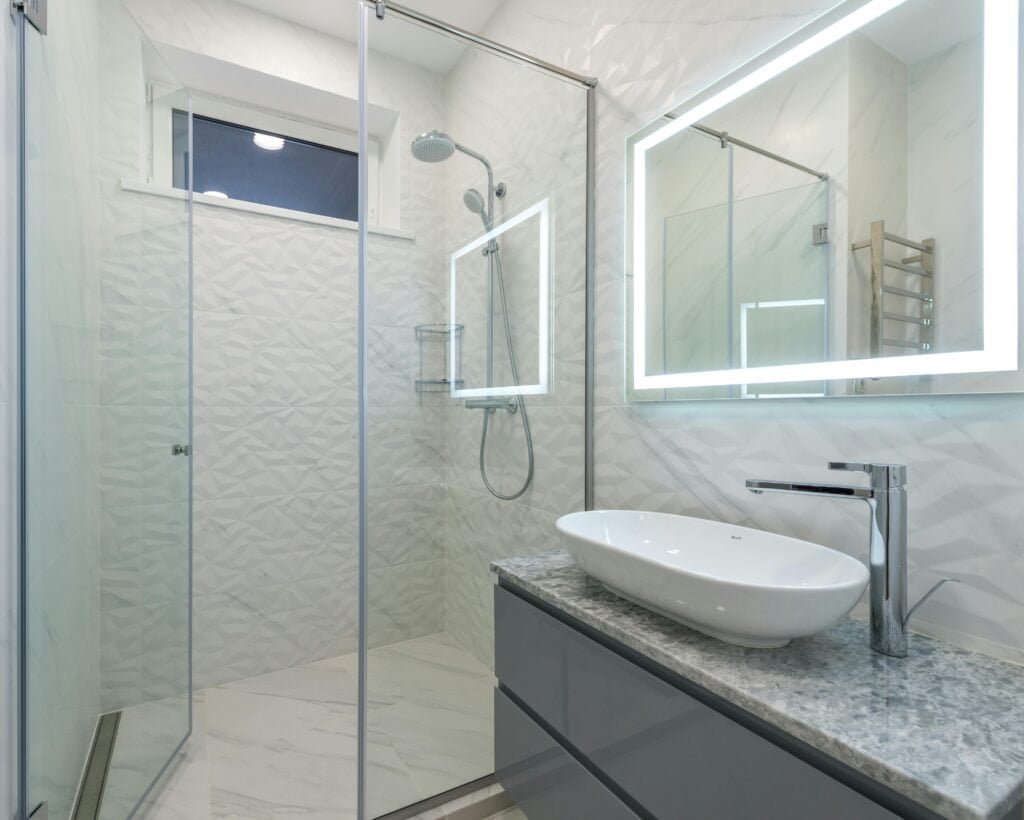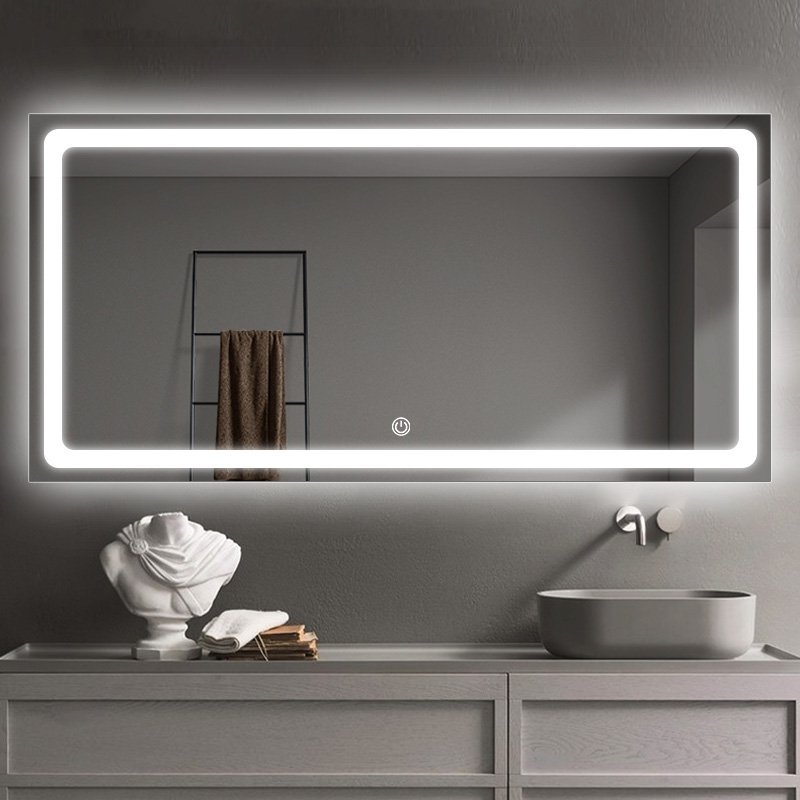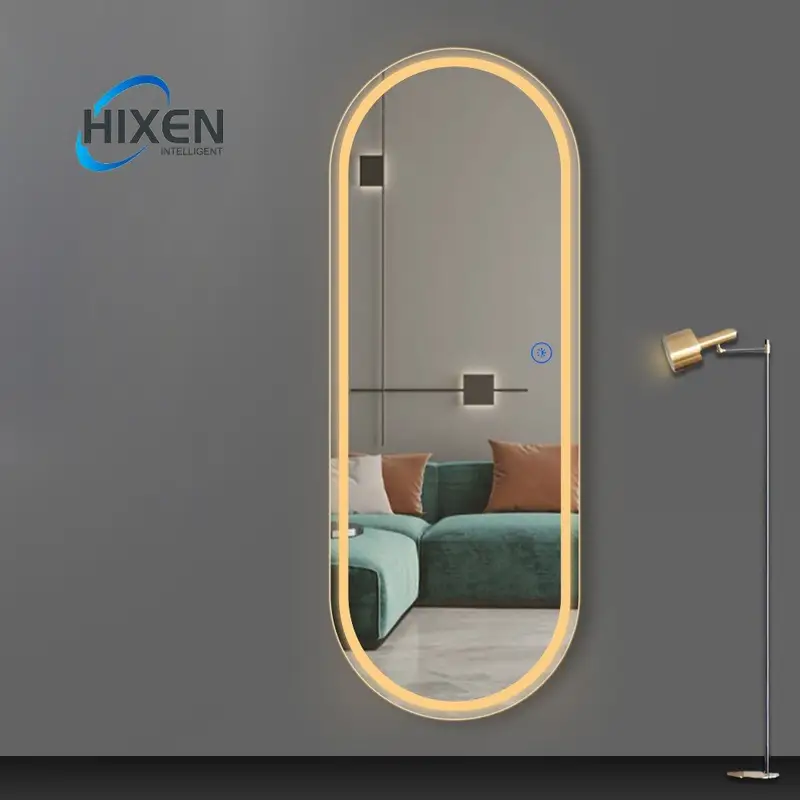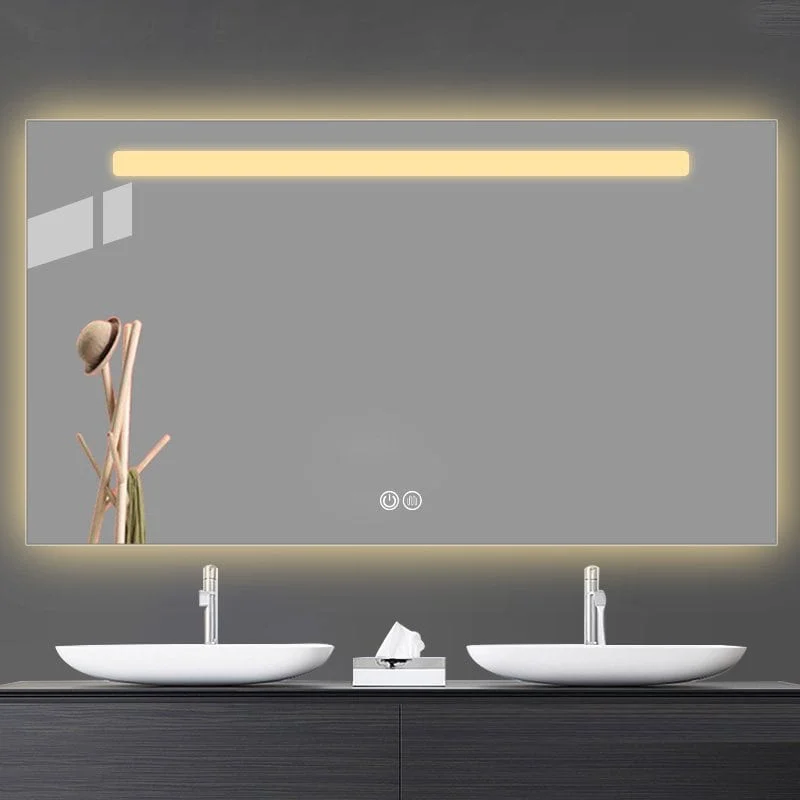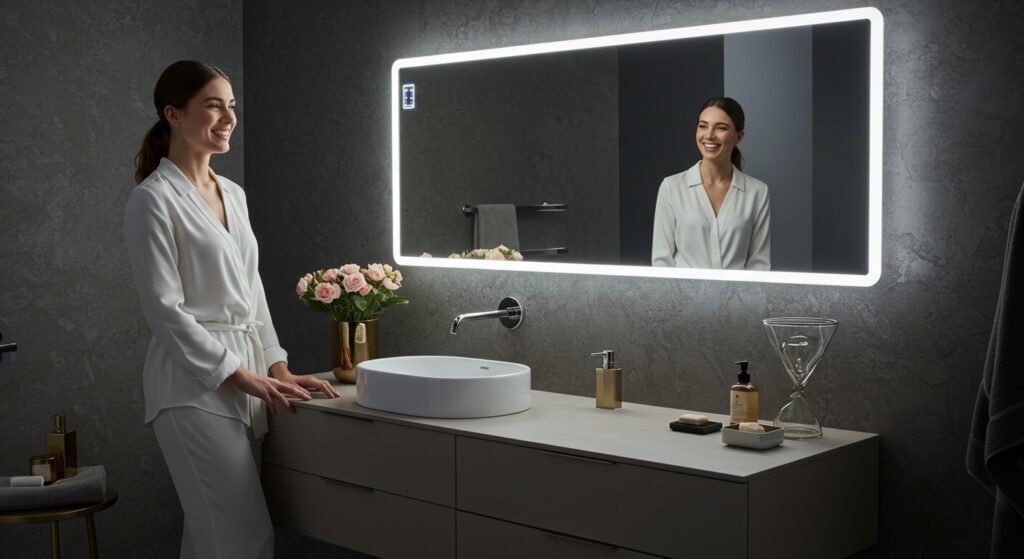|
Mendapatkan Anda Audio Trinity pemain siap ...
|
Do led bathroom mirrors need electricity?Many homeowners and contractors face confusion about LED bathroom mirror power requirements, worrying about complex installations and high electricity costs. These concerns often delay bathroom renovation projects and lead to poor purchasing decisions.
Ya, LED bathroom mirrors require electricity to operate their lighting and additional features, but they consume minimal power – khas 10-50 watts – and connect directly to your home’s electrical system through hardwired installation.
Understanding these essential details will help you make informed decisions about LED mirror selection and installation requirements.

How Much Electricity Do LED Bathroom Mirrors Use?
Understanding power consumption helps contractors and homeowners evaluate operating costs and electrical requirements for bathroom vanity mirrors.
LED bathroom mirrors typically consume 10-50 watts of electricity, significantly less than traditional bathroom vanity lights, resulting in annual operating costs of just $5-15 for average daily use.
| Mirror Size | LED Wattage | Annual Cost* |
|---|---|---|
| 24″ x 32″ | 15-25 watts | $8-13 |
| 36″ x 48″ | 25-40 watts | $13-21 |
| 48″ x 60″ | 35-50 watts | $19-27 |
*Based on 2 hours daily use at $0.12/kWh
Exact power consumption depends on the size of the mirror, how the LED strips are configured, and any additional features. For a standard lighted vanity mirror with basic lighting, plan on 20-30 watts. If you start adding features—especially ones with heating elements like the defogger, or a digital readout, or Bluetooth speakers—you’re going to burn through 40-50 watts. The three-color light switching and adjustable color temperature work efficiently without drawing significantly more power because you’re controlling the intensity of the LED output as opposed to using more electricity.
How Does LED Mirror Work?
LED bathroom mirrors incorporate advanced lighting technology directly into the glass mirror surface to deliver improved illumination and functionality.
LED mirrors feature light-emitting diodes positioned around the mirror perimeter or behind the glass surface, creating even illumination that eliminates shadows commonly found with traditional vanity lights.
The basic design involves LED strips or panels built directly into the mirror assembly. Today’s lighted mirrors for bathrooms use LED technology that operates on low voltage, produces bright and consistent light, and doesn’t generate a lot of heat. The LED elements connect to a control system that manages power distribution, dimming, RGB color systems and color temperature adjustments.
Some of the modern models have other cool features like defoggers, Bluetooth connectivity and digital readouts that all tie into the electrical system. The backlit mirror design gives you a nice, beautiful lighting effect that helps improve how the bathroom looks and provides great task lighting for grooming.

How Are LED Bathroom Mirrors Powered?
There exist several power supply methods for LED bathroom mirrors, depending on the installation requirements and the user’s preferences.
Most LED bathroom mirrors operate through direct hardwired connections to household electrical systems, though battery powered LED mirror options and plug-in models provide alternative solutions for specific applications.
The most common method of powering permanent bathroom vanity mirrors is hardwiring. This process involves connecting the mirror’s power supply directly to a dedicated electrical circuit via a junction box that’s behind the mirror where it’s mounted. The LED mirror itself is receiving standard household voltage. Internal transformers within the mirror then convert that household voltage to low-voltage DC, which is what the LED components require.
Some manufacturers offer battery powered LED bathroom mirror models. These mirrors feature rechargeable lithium batteries, and are designed for temporary installations or for locations where there’s no electrical access. Khas, these battery operated mirror wall mounted units will operate continuously for 6-12 hours on a single charge. This makes them ideal for powder rooms, guest rooms, or rental properties where hardwiring a mirror isn’t practical.
Apakah cermin LED perlu dicolokkan?
The power connection method depends on the mirror’s design and the installation requirements for your specific bathroom configuration.
LED mirrors can operate through hardwired connections, plug-in configurations, or battery power systems, with hardwired installation providing the most reliable and aesthetically pleasing solution for permanent applications.
The hardwired setup hides the cords and provides a continuous power supply to the lighted mirror. It’s a great permanent solution. On the other hand, the plug-in lighted mirrors provide flexibility if you’re a renter or if you can’t make electrical modifications in a bathroom. You do need to have a GFCI-protected outlet located near where you’re going to put the mirror. Namun, the plug-in model may not look as nice in terms of the aesthetics of your bathroom design due to the exposed cords.
Battery-powered options don’t require any electrical at the mirror, but you have to remember to charge them. Juga, with a battery-powered lighted vanity mirror for a bathroom, the brightness is generally lower than what you would get from a hardwired model. When it comes to deciding between the two depending on trying to determine which one you should use, think about how permanent the installation is, whether you have electrical to the location where you want to put the mirror, what the local building codes may say and then think about what it’s going to look like.
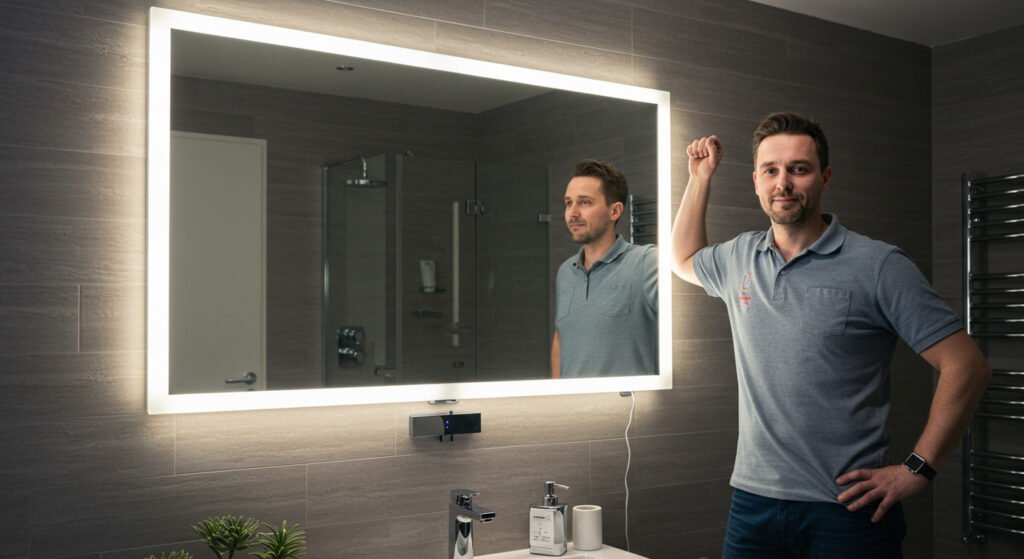
Do LED Mirrors Turn On with a Switch?
Control mechanisms for lighted vanity mirrors vary based on design features and installation configuration.
LED mirrors can operate through wall switches, integrated touch controls, motion sensors, or smartphone applications, with many models offering multiple control options for enhanced user convenience.
The most common is wall switch control. You’ll wire your hardwired mirror to a regular light switch that controls the power going to the lights in your mirror. Many modern lighted mirrors for bathrooms will have some sort of touch control built into the mirror itself. Misalnya, there may be a button or series of buttons running along the edge of the mirror. This control allows you to adjust brightness, color temperature, and possibly one or two other settings without needing a separate set of wall switches to control it.
Some of the fancier models have motion sensors built-in. They turn on when you walk up to them, or you can control them with your smartphone and set schedules and all sorts of things. The high-end models often have multiple ways to control them. With those mirrors, you could turn them on and off with a wall switch, use the touch controls, and even use an app on your phone. It’s very cool.
Do You Need an Electrician to Install a LED Bathroom Mirror?
Professional installation varies depending on electrical complexity and local building code requirements where you live.
Hardwired LED bathroom mirror installation requires licensed electrician services to ensure electrical safety, building code compliance, and proper GFCI protection in wet bathroom environments.
Licensed electricians have the knowledge to tie these into your household electrical system and to do it safely and according to the National Electrical Code and to your local building code requirements. This professional installation also ensures that the circuits are sized correctly and that you have the proper GFCI protection and that the connections are moisture-resistant where they need to be for a bathroom installation.
Electricians can modify existing electrical systems to accommodate LED mirror requirements, including adding dedicated circuits or upgrading electrical panels when necessary. While plug-in models may appear suitable for DIY installation, bathroom electrical work involving GFCI outlets should still involve qualified professionals to ensure safety and code compliance. The investment in professional installation protects against electrical hazards and ensures warranty coverage for quality LED mirrors.

What Type of Electrical Connection Do They Require?
Proper electrical connections ensure safe operation and optimal performance for LED bathroom mirror installations.
LED bathroom mirrors require 110V-120V electrical connections through dedicated circuits, typically installed with GFCI protection and controlled by wall switches for safe bathroom operation.
| Connection Type | Voltage | Instalasi | Best For |
|---|---|---|---|
| Hardwired | 110V-120V AC | Professional Required | Permanent installations |
| Plug-in | 110V-120V AC | DIY Friendly | Temporary/rental |
| Battery | 12V DC | No wiring needed | Portable/emergency |
Professional installation involves connecting the mirror’s electrical leads to household electrical systems through junction boxes positioned behind the mounting location. The led bathroom mirror wiring diagram typically shows connections between household voltage supply, internal transformers, and LED components operating at 12V or 24V DC. Licensed electricians ensure proper GFCI protection, adequate circuit capacity, and compliance with local electrical codes. The installation process includes securing appropriate electrical boxes rated for bathroom environments and establishing reliable connections that prevent moisture infiltration and electrical hazards.
What Safety Considerations Should You Know?
Bathroom electrical installations require specific safety measures due to moisture exposure and wet environment conditions.
LED bathroom mirrors must comply with IP44 or higher water resistance ratings and connect through GFCI-protected circuits to prevent electrical hazards in wet bathroom environments.
Proper installation includes maintaining adequate clearance from water sources, utilizing appropriate electrical boxes rated for bathroom applications, and following local electrical codes for wet location circuits. The mirror’s electrical components should feature sealed connections and moisture-resistant materials designed for bathroom conditions.
Professional installation by licensed electricians ensures compliance with safety standards and reduces electrical accident risks. Quality bathroom vanity mirrors from experienced manufacturers include built-in safety features such as low-voltage operation, thermal protection, and certified electrical components specifically engineered for bathroom environments. Regular inspection of electrical connections and GFCI testing ensures continued safe operation throughout the mirror’s service life.

What Are the Cons of LED Mirrors?
Understanding potential limitations helps contractors and homeowners make informed decisions about LED mirror investments.
LED mirror disadvantages include higher initial costs, potential electronic component failures, limited repairability, and dependency on electrical power compared to traditional glass mirror alternatives.
The primary drawback involves higher upfront investment compared to standard bathroom mirrors, with quality lighted vanity mirrors for bathroom applications typically costing significantly more than conventional mirrors. Electronic components within LED mirrors may require replacement over time, particularly in moisture-rich bathroom environments where electrical stress can accelerate component degradation.
Repair complexity often necessitates professional service or complete unit replacement rather than simple bulb changes associated with traditional vanity lights. Power dependency means lighting functions become unavailable during electrical outages, unlike battery operated mirror wall mounted alternatives that provide backup illumination. Some users report sensitivity to LED light color temperatures or find integrated controls less intuitive than simple wall switches.
LED Mirror in Bathroom Worth It?
Investment value depends on user priorities, bathroom usage patterns, and long-term cost considerations for modern bathroom upgrades.
LED bathroom mirrors provide excellent value through energy efficiency, enhanced functionality, improved lighting quality, and modern aesthetics that justify higher initial costs for most homeowners and commercial applications.
The combination of superior task lighting, energy efficiency, and integrated features makes lighted bathroom mirrors worthwhile investments for active bathrooms. Modern LED vanity mirror designs eliminate shadows that compromise grooming activities while consuming significantly less electricity than traditional bathroom vanity lights.
Additional features such as defogging capability, adjustable color temperature, and digital displays enhance daily convenience and bathroom functionality. Quality rectangular bathroom mirrors with LED integration typically last 15-20 years with minimal maintenance, providing long-term value that offsets higher initial investment costs. For small bathroom mirror applications, LED integration maximizes lighting efficiency in space-constrained environments where separate light up vanity mirror fixtures prove impractical.

How Does Power Consumption Compare to Traditional Lighting?
Energy efficiency represents a significant advantage of LED technology over conventional bathroom lighting solutions.
LED bathroom mirrors consume 60-80% less electricity than traditional incandescent bathroom vanity lights while providing superior illumination quality and operational life spanning 25,000-50,000 hours.
Traditional bathroom lighting using incandescent vanity lights typically consumes 100-200 watts for equivalent illumination levels provided by 20-40 watt LED mirrors. This dramatic efficiency improvement translates to substantial long-term electricity savings and reduced environmental impact. LED technology generates minimal heat compared to incandescent alternatives, reducing bathroom cooling loads and improving user comfort.
The extended operational life of LED components eliminates frequent bulb replacement costs and maintenance requirements associated with traditional lighting systems. Wall mirror with lights utilizing LED technology provides consistent light output throughout their service life, unlike incandescent bulbs that gradually dim with age. These efficiency advantages make LED mirrors increasingly attractive for both residential and commercial bathroom applications seeking reduced operating costs and maintenance requirements.
Kesimpulan
LED bathroom mirrors require electricity but operate efficiently with minimal power consumption and professional installation. Choose experienced suppliers to ensure quality, safety, and optimal performance for your bathroom lighting needs.
- Untuk mempelajari cara memilih cermin kamar mandi yang tepat klik di sini.
- Untuk mempelajari cara memasang cermin pilih di sini.
- Untuk mempelajari cara memilih cermin ukuran yang tepat klik di sini.
- Untuk mempelajari bagaimana cermin dibuat klik di sini.
- Klik di sini dan Anda akan mengetahui mengapa kami terlihat lebih baik di depan cermin.
- Klik di sini Anda akan belajar tentang TOP 10 produsen cermin led untuk 2024.
- Klik di sini untuk mengetahui Mengapa lampu cermin rias saya tidak menyala?
- Cari Tahu Berapa Tinggi Seharusnya Cermin Kamar Mandi? Klik disini
- Klik di sini jika Anda tidak tahu cara membersihkan cermin Anda
- Untuk mengetahui cara memperbaiki Cermin Sensor Sentuh Tidak Berfungsi klik di sini
- Mengetahui 10 Masalah Umum Cermin Kamar Mandi LED Klik Disini

